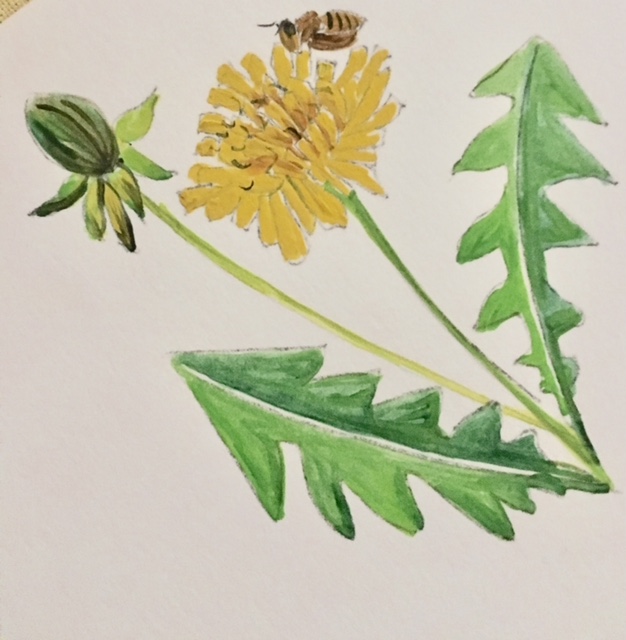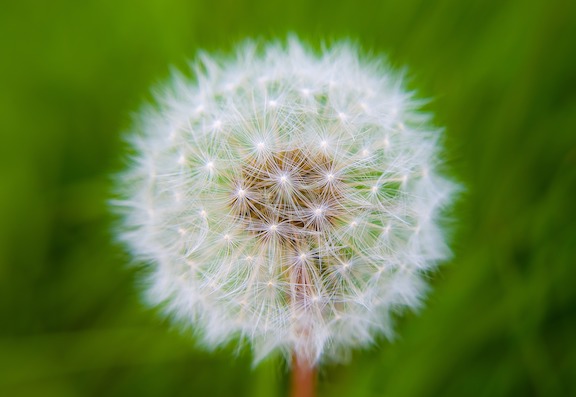Though the weather outside might be frightful, there are still flowers pushing the season and popping up all over the place. One of the earliest weeds (or wildflowers, depending on your point of view!) to appear is the bright yellow dandelion.

Years ago, my mother and I were traveling through New England in early spring and came upon a field of these cheerful little flowers. We stopped to admire them but when my mother realized that they were dandelions, she sniffed and said, “they would be pretty if they weren’t so common!”

Apparently this is a universal attitude. My good friend, Dr. David Bosshardt wrote to tell me that when he was traveling in Switzerland, looking for his great grandmother’s ancestral home a few years ago, he had a similar experience. He wrote: “All of the pasture land in and around Durrenroth was unbelievably bright yellow the week we were there. It was so beautiful, it almost had a fairyland appearance. These yellow waves were set in a sea of a deep green grass.
“I asked one of the farmers what all the yellow flowers were and why they were so dense. He told me they were Lowenahn. The translation of this is Tooth of the Lion in English. He seemed to have some contempt for something that grew so prolifically. Though he acknowledged their beauty, he clearly thought that they were more of a pest. “
Of course “tooth of the lion” is dent de lion in French – and dandelion in English. This name or its equivalent is used in every country where the plant grows and is descriptive of the toothed margins of the leaves. The more sunlight the plant receives, the more “teeth” the leaves have.

Dandelion leaves, particularly early in the season are delicious and good for you. High in vitamins A and C, the leaves have been eaten and enjoyed for many centuries. A Dutch legend contends that if you eat dandelion leaves on Mondays and Thursdays, you’ll always stay healthy!
Dandelions are native to Europe, where they are often cultivated as a salad green. The leaves, sweetest in early spring, can be eaten raw or cooked like spinach.

Dandelions form a seed head that has proven to be irresistible to children everywhere. Pick a fully developed seed head with seeds attached to silky parachutes, make a wish and blow on it. If all the seeds blow off, your wish will come true. (If not, just pick another and try again.)
Yes, they’re pests and yes, they’re common as dirt, but how can you resist the cheerful appearance of these bright yellow faces, particularly in mid winter when so much else looks drab and brown? Just enjoy them for what they are – a welcomed ray of sunshine.

Love this! I have a love/hate relationship with dandelions myself. I have fond memories of picking posies of them as a child and I’m now the recipient of the same from my little granddaughter. They do have a tendancy to take over my tiny patches of yard though, so I have to “weed” them. I tried a salad with the greens once at a trendy place in Manhattan. It came with a breaded and fried egg on it that was similar to a poached egg inside. I have to say, those greens were definitely bitter – it must not have… Read more »
Well, your trendy Manhattan restaurant probably got their dandelions from Georgia and by the time they got there, they were bitter!
I will look at them more appreciatively in the future. Good article.